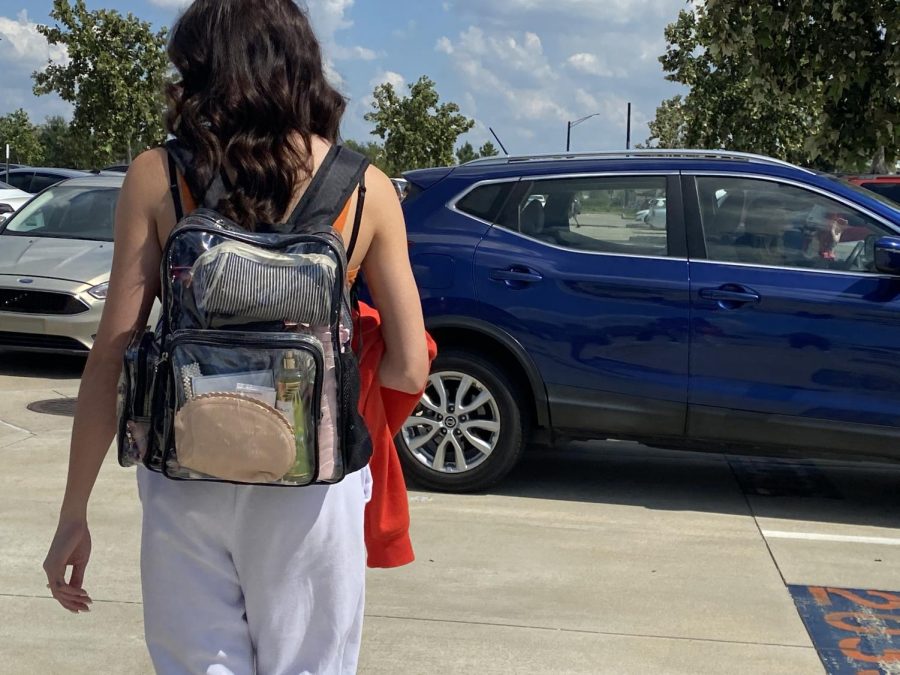Rage on roads presents threat for Houstonians, student drivers
As Texan roadways continue to crowd, Houstonians battle an influx of road rage incidents due to the increase of behind-the-wheel aggression over the past ten years.
Over the last decade, Houston’s rate of automobile violence is skyrocketing, mirroring the rising rates of shootings in the United States based on anger while driving. This phenomenon can be explained in a human’s basic biology, Bridgeland’s psychology and sociology teacher Laura Nguyen explains.
“When a person is blocked from reaching a goal that’s naturally going to cause frustration,” Nguyen said. “There is a connection between frustration and aggression; this is what psychologists have discovered. It’s called a frustration-aggression principle. So when people get frustrated, we have a natural human tendency to become aggressive.”
The frustration-aggression principle can be tied into everyday activities like having to watch a commercial after a cliffhanger, having to wait for food in a long line, or even things like having to sit in traffic after a long day. The waiting in turn causes frustration, and by the aforesaid principle, the frustration can evolve into anger.
The phenomenon of the frustration-aggression principle on the roads only evolved further as Houston’s population quickly rose between 2010 and 2020 by 9.8%.
“So as traffic increases [due to increased population], that’s going to cause increased frustration, and that’s going to lead to road rage issues.” Nguyen said.
The amount of people on the roads also does not seem to be the only factor affecting aggression on Houston roadways. Junior Tori Foster, who started driving during the pandemic, noticed another pattern to the frustration.
“I think road rage really became a huge issue in 2020 because I didn’t hear a lot about road rage before then,” Foster said. “But then after COVID and everything, I think that people didn’t really know how to handle themselves again. I think after 2020 it became a really big issue in Houston.”
According to Nguyen, therapy is an option for people who are experiencing such aggressive tendencies behind the wheel. These therapeutic practices aim to target problems with containing anger and learning various cool-down methods.
“There are multiple different types of therapy, probably one of the biggest ones needs to be Cognitive Behavioral Therapy, what they call CBT,” Nguyen said. “That addresses not only the behaviors, but also the thinking behind it to help you identify before you engage in those negative behaviors, what your thought process is and to help you become more aware of those thoughts and how they can negatively affect your behaviors.”
Bridgeland currently does not have a large road rage issue, yet there are often minor accidents in the parking lots due to over a thousand newer drivers needing to park in a certain amount of time. Assistant Principal Jill English is tasked with managing the parking lots at Bridgeland. She believes most problems occur when students are in a hurry and are not giving proper attention.
“Students who are on their phones, other times [it’s] students that are late hurrying to park, so we see cars that are parked next to them have their sides rubbed up against,” English said. “We’ve had a couple fender benders, but we haven’t had anything in the parking lot that has been too big of an issue.”
There are also some issues stemming from parents not using the proper drop off lot, causing more back up traffic in the two entrances all students who drive must take to park.
“I think that we can cut down the [amount of traffic] by having the parents go to the band hall and have them go to the front… because the majority of the traffic doesn’t seem to come from the students, it comes from the parents that just keep on going by the stop sign,” Foster said.
A simple solution to avoid backups and the frustration associated with sitting in the lines seems to be appearing earlier than you normally would to park in the lots. More solutions and possible fixes are still being tinkered with and conjured up by both staff members and English.
“We’ve tried a lot of different things, but I’d just get here early,” English said. “You can’t ever gauge what traffic will be like exiting 99… Mr. Stanton is now at the front… so that line is going a lot quicker… Assigned parking spots have helped, so students know where they’re going everyday.”

Carolyn Gilbert is a third-year staff member and is now the editor in chief and magazine editor of Bridgeland’s Student Media site and magazine for the...






